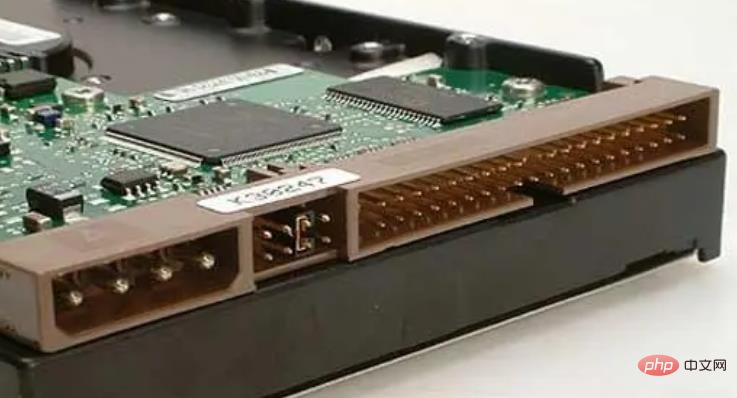Home >Common Problem >what is ide
IDE is "electronic integrated drive", its full English name is "Integrated Drive Electronics", that is, "electronic integrated drive", or "integrated device circuit"; its original meaning is "hard disk controller" A hard drive integrated with the "disk body"; IDE is a type of disk drive interface. The hard disk and optical drive are connected to the motherboard through the IDE interface; the controller circuit resides in the drive, and a separate adapter card is no longer needed.

The operating environment of this tutorial: Windows 10 system, DELL G3 computer
What is ide?
IDE, the full English name is "Integrated Drive Electronics", that is, "electronic integrated drive", or "integrated device circuit". Its original meaning refers to the hard drive that integrates the "hard disk controller" and the "disk body".

Its original meaning refers to the hard drive that integrates the "hard disk controller" and the "disk body". IDE is a type of disk drive interface. The hard disk and optical drive are connected to the motherboard through the IDE interface. The controller circuitry resides within the drive, eliminating the need for a separate adapter card.
The basic idea behind the IDE is that the hard drive and controller should be combined together. Controllers are small circuit boards that contain chips that control how the hard drive properly stores and accesses data. Most controllers also come with some memory, which acts as a buffer to enhance hard drive performance.
For users, hard disk installation is also more convenient. The interface technology of IDE has been continuously developing since its birth, and its performance has been continuously improved. Its low price and strong compatibility have made it irreplaceable by other types of hard drives.
IDE represents a type of hard disk, but in actual applications, people are also accustomed to using IDE to refer to the earliest IDE type hard disk ATA-1. This type of interface has been developed with the development of interface technology. was eliminated, and later developed more types of hard disk interfaces, such as ATA, UltraATA, DMA, UltraDMA and other interfaces are all IDE hard disks.
PIDE hard disk
PIDE hard disk has the following three transmission modes: PIO (Programmed I/O) mode, DMA (DirectMemoryAccess) mode, UltraDMA (referred to as UDMA) mode .
The biggest drawback of the PIO (Programmed I/O) mode is that it consumes a huge amount of CPU resources. The IDE interface running in PIO mode has a data transfer rate of 3.3MB/s (PIOmode0) ~ 16.6MB/s (PIOmode4).
PDMA (DirectMemoryAccess) mode is divided into two types: Single-WordDMA and Multi-WordDMA. The maximum transfer rate of Single-WordDMA mode is 8.33MB/s, and Multi-WordDMA (DoubleWord) can reach 16.66MB/s.
The biggest difference between PDMA mode and PIO mode is that DMA mode does not rely too much on CPU instructions to operate, which can achieve the effect of saving processor running resources. However, due to the emergence and rapid popularity of UltraDMA mode, these two modes were immediately replaced by UDMA.
PUltraDM mode (UDMA for short) is a standard cited in the UltraATA format, using the 16-bitMulti-WordDMA mode as the benchmark. One of the advantages of UDMA is that in addition to the advantages of DMA mode, it also applies CRC (Cyclic Redundancy Check) technology to enhance the performance of error detection and debugging during data transmission.
Since the implementation of the PUltraATA standard, its interface has applied DDR (Double DataRate) technology to double the transmission speed. The transmission speed of UltraATA/100 is as high as 100MB/s.
For more related knowledge, please visit the FAQ column!
The above is the detailed content of what is ide. For more information, please follow other related articles on the PHP Chinese website!